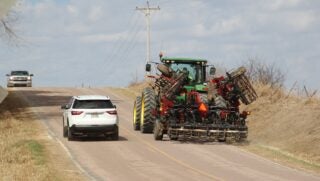The adoption of cover crops as a key soil health practice continues at a rapid rate throughout the country, according to new data from the 2017 Census of Agriculture. Cover crops were planted on 15.4 million acres in 2017, an increase of 50 percent over five years, the census shows. Iowa led the way with a 156.3 percent increase during that period, and a number of other states also more than doubled their cover crop acreage, including Missouri, Illinois, Ohio, Mississippi, Nebraska, Vermont, and Arizona.
“In visiting with my fellow farmers all over the United States, it’s been incredibly gratifying to see so many people committed to the stewardship of our soils,” says Steve Groff, a Pennsylvania farmer and one of a growing number of enthusiastic cover crop experts. “In too many places our soils have become degraded, and we really need to reverse that trend and rebuild the health of our soils going forward. Cover crops are one of the most effective tools we have to restore soil carbon and regenerate our soils.”
The remarkable expansion of cover crop acreage is a result of countless efforts by conservation advocates and others across the country. “This significant growth in cover crop acreage is providing major dividends in soil health and conservation on many types of farms and in all regions of the United States,” says Dr. Rob Myers, director of Extension programs for North Central Region SARE. “My hope is that this pace of increase will continue and even accelerate, leading us to 40 or 50 million acres of cover crops in the next decade.”
“Getting significant additional growth in cover crop adoption will take continued interest by farmers and a coordinated effort among many different partner organizations and agencies, which I believe we can accomplish,” Myers says. “The need for additional protection and improvement of our nation’s soils is paramount, as our whole food system depends on having healthy soils.”
According to Myers, a number of factors have contributed to this growth in cover crop acreage:
- Perhaps most notable is the growing interest by farmers in increasing soil health. Along the way, a number of organizations have contributed to education on soil health, including USDA NRCS, the Soil Health Institute, the Soil Health Partnership, SARE, other conservation and farm organizations, and the agricultural media.
- Awareness of how to best use and manage cover crops has grown in part through the innovative work done by leading farmers.
- Farmers are recognizing that cover crops can help with the efficiency and performance of their cropping system, including under extreme weather conditions. A national cover crop survey, conducted by the Conservation Technology and Information Center and funded by SARE and the American Seed Trade Association, found that soybean yields increased 11.6 percent and corn yields increased 9.6 percent in the drought year of 2012 following use of cover crops versus no cover crops.


